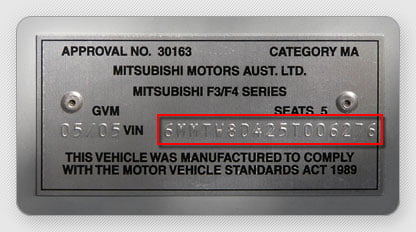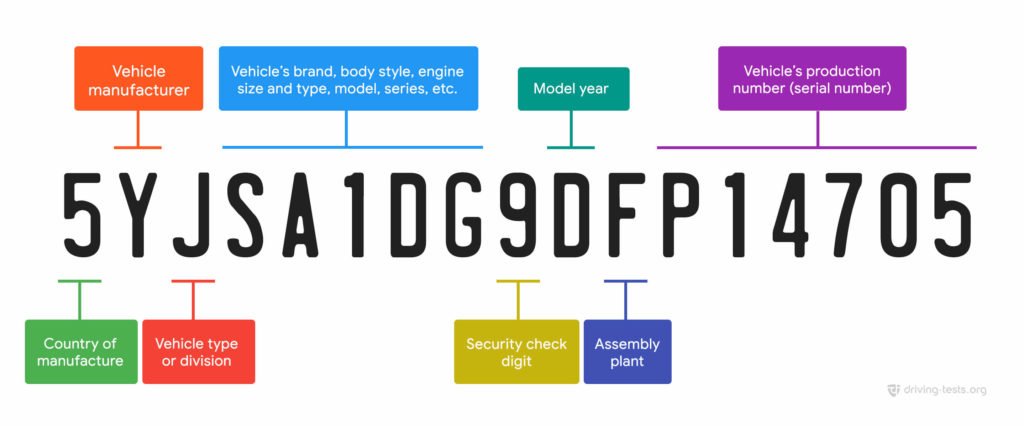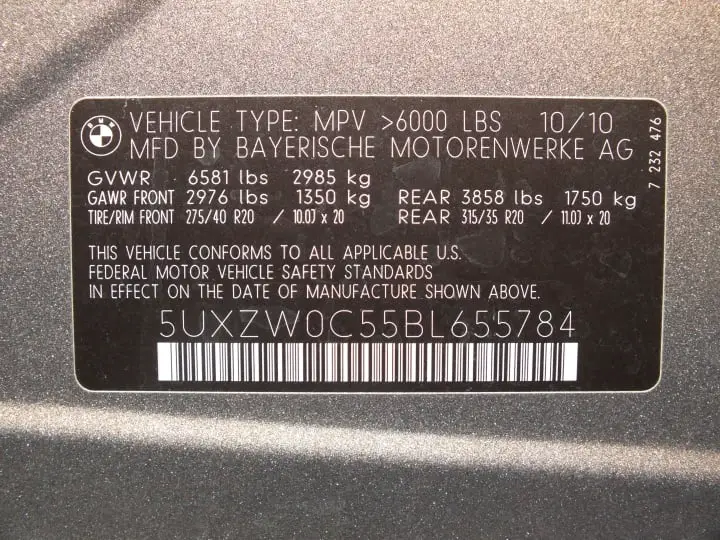Everybody in the world has their own identity card, which shows the day you were born, where you live, and your nationality.
Cars also have one too! And that’s called VIN Number or VIN for short.
You may see or hear about this somewhere before, right? VIN number plays an important role in your driving life, so it will be better if you know how to use it.
This article will give you detailed information about the VIN number, including its meaning and location. Understanding more about VIN numbers will be beneficial for you in many cases. Let’s start!
WHAT IS A VIN NUMBER?

The VIN number is a specialized identifying code for
a specific vehicle.
Credit: en.wikipedia.org
In short, the vehicle identification number (VIN for short, and also informally called a “VIN number”) is a specialized identifying code for your specific vehicle. Like human fingerprints, no two VINs are precisely the same, allowing specific vehicles to be tracked for purposes including registrations, recalls, thefts, warranty claims, and insurance coverage.
In general, the VIN is a 17-character sequence printed upon several locations on your vehicle. Though some older vehicles differ from this norm, all other modern vehicles use a unified VIN system that can be decoded by those with a desire or need to track a specific vehicle.
WHAT DOES THE VIN TELL A VEHICLE OWNER?
The VIN can tell a vehicle owner or other authority figure a fair amount of information without even needing to see the vehicle in person. The VIN includes 17 alphanumeric characters that describe a variety of broad vehicle traits, including manufacturer’s origin country, brand manufacturer, body style, engine size, model year, and more.
This sequence also includes highly specific vehicle information, including the vehicle’s production number (also called a serial number) and a security check number. In sum, these 17 characters provide a portrait of your specific vehicle based upon its key features and manufacturing origins.
The following image will help you to decode your VIN once you’ve identified its location (more information on locating the VIN below):

without even needing to see the vehicle in person.
Credit: driving-test.org
IDENTIFYING YOUR VEHICLE’S VIN
First and foremost, you need to know what you are looking for when you hunt for your on-vehicle VIN. In general, you can find the VIN numbers on a sticker or plate that looks like the below image, with a specialized barcode included:

Your VIN will be printed on a sticker or plate with a specialized barcode
Credit: www.scrapcarnetwork.org
However, some modern vehicles include a more user-friendly VIN sticker or plate. These verbally describe the manufacturer and their origin country (among other details) while still providing the recognizable VIN. You can found an example below:

Some modern vehicles include a more user-friendly VIN sticker or plate.
Credit: willz.ca
ON-VEHICLE VIN LOCATIONS
Your vehicle’s VIN can be located in several locations at once (as many manufacturers print it in multiple locations within the vehicle). You should ensure that at least one of these locations remains intact and visible in case someone stole your vehicle and in need of identification by the police.
The first and most visible on-vehicle location is on the inside of the dashboard, on the driver’s side. You will find a printed VIN along with other key vehicle information in the corner, either as a sticker or printed directly onto the windshield. Of note, this location may not be available if the windshield has been replaced at any point in its lifespan.

A VIN along with other key vehicle information is printed on the inside of the dashboard, on the driver’s side.
Credit: www.evilution.co.uk
You can also find a VIN printed on a sticker or plate inside the driver’s side car door. Here, you can find the VIN located on the curved portion of the door jamb (often the part sloping up towards the center of the vehicle). The VIN will always remain in place (assuming major bodywork has not been performed on the driver’s side).
OFF-VEHICLE VIN LOCATIONS

You should write down your VIN and store it with your critical vehicle paperwork.
Credit: en.wikipedia.org
If neither of these locations is readily available, your VIN is likely recorded in several other accessible locations. Keep these locations in mind in case you need to record your VIN while away from your vehicle properly.
First, you should check your vehicle’s insurance card. When you registered for car insurance, you were required to provide your vehicle’s VIN for record-keeping and tracking purposes. Nearly all states require drivers to carry their insurance card with them when driving, so this method of checking the VIN should be easily within reach.
Otherwise, it would help if you considered contacting your local Department of Motor Vehicles (DMV) in order to ascertain your VIN. When registering and licensing your vehicle with your home state, you also have to provide the VIN for tracking purposes. Though the DMV will not likely provide this information without further proof of identification, this may be a worthwhile choice of last resort.
In any case, you should write down your VIN and store it with your critical vehicle paperwork (such as recall notices and manuals). Ideally, this location should be off-site from your vehicle, such as a lockbox or safe, in case someone stole your car.
WHAT IF MY VIN AS FEWER THAN 17 CHARACTERS
First, recheck your VIN and write it down character by character. If you find again that your VIN doesn’t have 17 characters, you’re likely to drive a vehicle manufactured before 1981.
VIN sequencing was standardized in 1981, meaning that vehicles manufactured prior to that model year may feature VINs ranging from 17 all the way down to 11 characters. Though these vehicles are becoming rarer on the road today, you should take note if your vintage vehicle falls into this category.
THE BOTTOM LINE
Identifying your VIN is quick and easy, thought of great importance. It would be best if you were sure that your vehicle’s VIN is written down in your long-term records, even after you’ve sold the vehicle. With the VIN in hand, vehicle owners and experts alike will always be able to pinpoint a variety of critical information in just moments of decoding.
FAQs
How do manufacturers use my VIN?
Manufacturers will list specific models affected by a defect based on their serial number and manufacturing plant in some recalls. All of this information can be found in the VIN sequence, so you can use it to determine if your vehicle is affected by the recall.
Should I keep my VIN private?
While you should keep private records of your VIN (along with other critical vehicle information), it is generally safe to provide your VIN to other individuals, especially those looking to use it to check its history using an online service. The VIN is placed in broad daylight on the vehicle’s windshield, so it is virtually already public information. If you have reasonable suspicion about a vehicle buyer asking for the VIN, take appropriate cautions to ensure you and your information remain safe during the process.
Read more: OBD2 Protocol: What Is It And Which Protocol Does My Vehicle Support?
